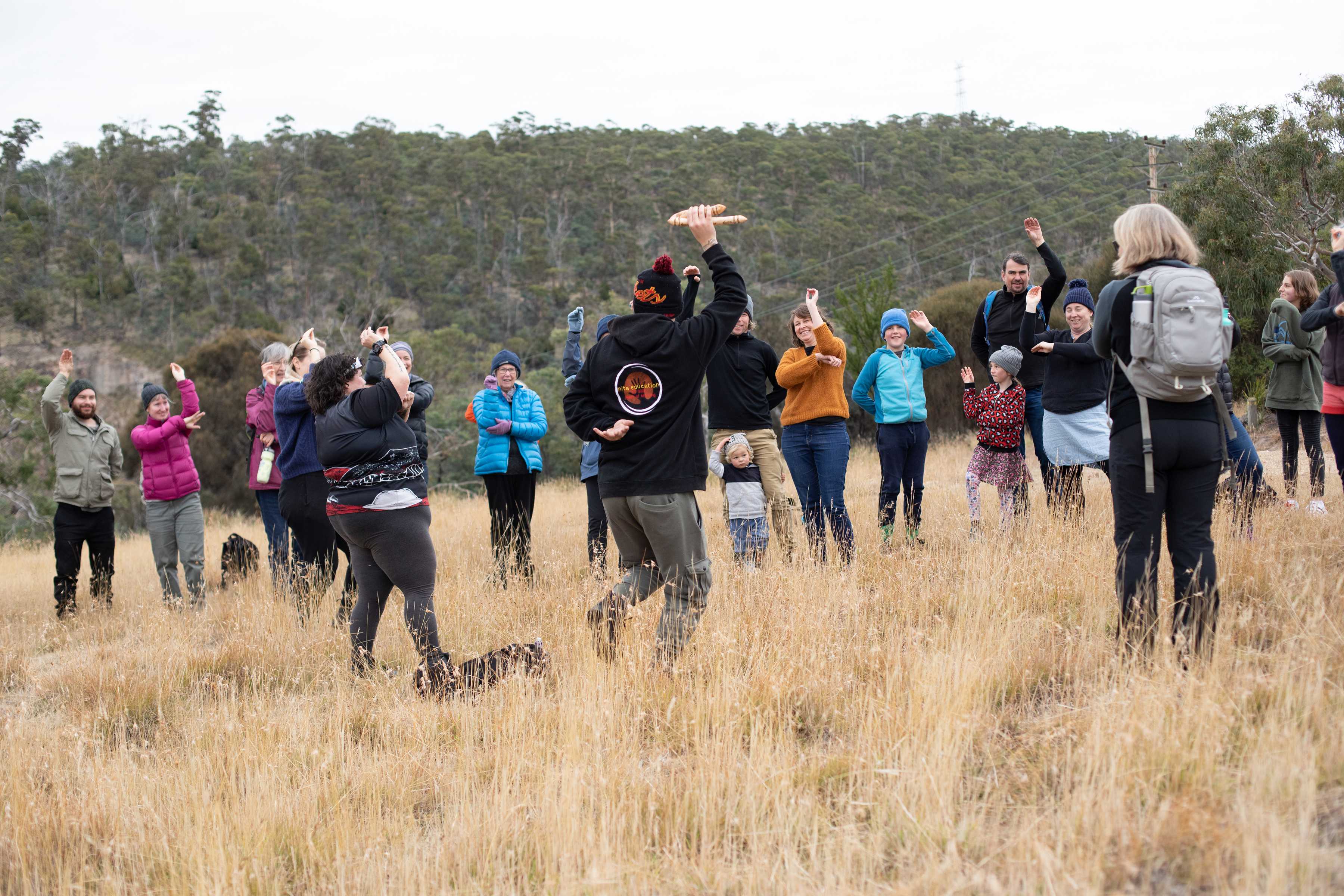Clarence Climate Action members recently participated in a Connecting to Country excursion led by Nita Education to learn more about Indigenous culture and create awareness of Aboriginal ancestors. Nita Education was established in 2017 by Trish Hodge and Craig Everett with the aim to create awareness of how Aboriginal ancestors cared for country, and also inspire the community to discover more about sustainability through walks and workshops.
Connecting to Country

The group was led on a walk along the Shag Bay Heritage Walk by Ms Hodge and Mitchem Everett, stopping at various points to learn about Aboriginal culture.
Before the group departed Geilston Bay, Ms Hodge welcomed everyone to the country of the Moomairremener people, and said she was thrilled to share the day with them because Aboriginal heritage belonged to all Tasmanians.
“Our culture is how we connect to milaythina (country) and how we connect to each other, if we are connected then we can protect, conserve, grow and prosper together” Ms Hodge said.
The first stop on the walk had participants learn and taste a selection of bushfoods and medicines, including saltbush, samphire, native cherry, sagg and kangaroo grass.
At the next stop, participants learnt about the country’s history and the significance of Aboriginal heritage.
“Our ancestors cared for the land, and in return it cared for us,” Ms Hodge said.
“Our ancestors are the original scientists, doctors, botanists, geologists, chemists, astronomers, navigators, story tellers, bakers and the experts at sustainable living.”
Clarence Climate Action member Marion Stoneman said the activity helped everyone realise how long Tasmanian Aboriginal people had lived in Tasmania.
“We reflected on how much damage has been done to the Aboriginal people, the land and the climate in this relatively short time, and how stable and well cared for the land was for such a long time prior to this,” she said.
Ms Hodge discussed palawa kani, the language of Tasmanian Aborigines that was developed from remnants of a complex mosaic of languages from many different groups.
She also talked more about the Aboriginal lifestyle, stories and totems, as the group sat down to lunch at the remains of an ancient cultural living site.
The next stop was a vein of chalcedney, a type of agate used for making stone tools, before the group took part in the emu dance.
“Mitchem led everyone in the dance and accompanied the dancers with a beat on the clap sticks,” Ms Stoneman said.
“Everyone was all engrossed, from youngest to oldest, and followed his lead with enthusiasm, making emu gestures and running to and fro.
“Everyone left feeling excited about having learnt more of our Indigenous history, more about our native plants and more about treading lightly and sustainably on this ancient land.”
Clarence Climate Action was grateful to Healthy Tasmania for a grant which made this activity possible.
Clarence Community Action supports the local community with positive actions working towards a sustainable future.
The group was formed by everyday people taking local action on climate change for a better future.
For more information on Clarence Climate Action, visit clarenceclimateaction.org or the Facebook page.
For more information on Nita Education, visit nita.education or the Facebook page.
Eastern Shore Sun, July 2021, page 5